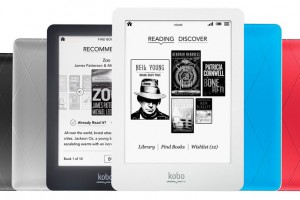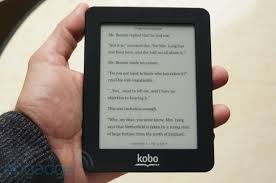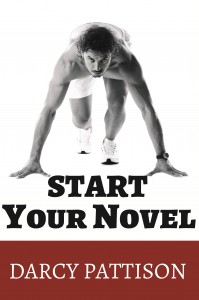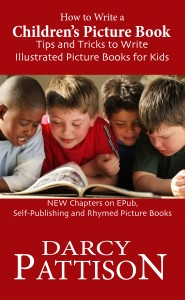Hi folks, I am writing a summer long series. It's called Publish and is in conjunction with my TEENS Publish workshop at the Ringer Library in College Station, Texas. The tribe is almost finished with their masterworks. The title of our anthology is A New Generation: TEENS Publish 2015 Anthology. Our revision letters are in and our last meeting is over. It was hard to say goodbye.
Viewing: Blog Posts Tagged with: publish, Most Recent at Top [Help]
Results 1 - 19 of 19
Blog: Seize the Day (Login to Add to MyJacketFlap)
JacketFlap tags: creativity, optimism, publish, Add a tag
Blog: Seize the Day (Login to Add to MyJacketFlap)
JacketFlap tags: artistic lessons, writing exercise, theme, publish, Add a tag
Hi folks, I am writing a summer long series. It's called Publish and is in conjunction with my TEENSPublish workshop at the Ringer Library in College Station, Texas. The tribe is working hard. We had a committee meeting this week about the title of our book and here it is: A New Generation: TEENSPublish 2015 Anthology. We also picked a trim size for our book. Now on to the topic.
This week we dove into theme. I think some of this will relate to any creative life. We created word clouds through Wordle.net. First we wrote a list of topics. These topics were used to create our cloud. The word cloud image has to be posted somewhere and stared at on a regular basis as you create your work. In other words, don't mess with theme while you are writing. Be aware of it but don't touch it. You will end up on the road of didactic and moralistic. Avoid at all cost.
We talked about how theme works. You take a topic and then you say what the author is trying to say about that topic. Here are two examples. In Star Wars, a topic is destiny. The road to destiny will show up when your pining for it, it won't be what you expected, it will rip you away from everything you have ever known, it will be harder than you ever dreamed, and it will be better than you ever expected. In Finding Nemo, a topic is fatherhood. A father will go to the ends of the earth to save a beloved son; nothing will stand in his way.
Finally I mentioned some of my theme tricks. I drop quotes around to inspire me as I work on a book. I put them in junk drawers, tape them to the bottom of lamps, and tuck them between the pages of my favorite books, and when I stumble on them, I think about them. I also pick out a list of inspirational songs and play them before or while I am working. I also chose inspirational images and then stare at them when I get stuck. These activities feed my theme. I don't know how and I don't want to know. The journey of writing a book is saying what you want to say and it something of a mystery, just like you.
I hope you enjoyed this little trip into theme. I hope you never think about and create it anyway. Dig into your soul and you will share what your theme. I will be back next week with revision.
Here is doodle for you:
A quote for your pocket. This is some inspiration for one of my books.
“The past is never dead. It's not even past.” William Faulkner.
Blog: Seize the Day (Login to Add to MyJacketFlap)
JacketFlap tags: writing exercises, setting, publish, Add a tag
Hi folks, I'm starting a series that will last for the summer. It's called Publish and is in conjunction with my TEENSPublish workshop at the Ringer Library in College Station, Texas. This is the fourth week and I'm covering setting. I think some of this will relate to any creative life.
Hope you create master works this week. Next week we will take a break from the nuts and bolts and sneak in a contemplative blog about the universe, creativeness, and such. See you then.
Here is a art.
Blog: Darcy Pattison's Revision Notes (Login to Add to MyJacketFlap)
JacketFlap tags: ebook, publish, indie, reading online, kobo, publish a book, self, Add a tag
Goodreads Book Giveaway
Start Your Novel
by Darcy Pattison
Giveaway ends October 01, 2013.
See the giveaway details at Goodreads.
For the last few years, the best options for Indie publishers to publish an eBook have been Kindle, Nook and Apple iBooks. Now, there’s another big competitor on the scene, Kobo Books.
Kobo’s Writing Life opens the market to authors and provides exciting new opportunities. Especially exciting is the collaboration with independent bookstores and the American Bookseller’s Association. Today, Mark Lefebvre, Director of Self-Publishing and Author Relations for Kobo stops by to discuss their new interface for Indies. I met him at a conference in Oregon in July and immediately went home to upload my ebooks to KWL. It was a simple process and I wanted to share this with you.
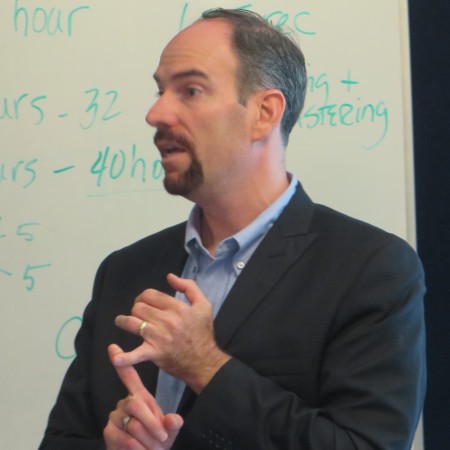
Mark Lefebvre, Director, Self Publishing & Author Relations, Kobo Writing Life. I met Mark at a conference in Oregon in July, 2013.
Question: At the Oregon conference, I had my first chance to see a Kobo reader and thought it was fantastic. I loved the Kobo Mini’s small size, how it felt in the hand and the clean reading interface. How does the Kobo ebook reader compare to Kindle, Nook and iPads? Is there a color Kobo and do pages rotate from portrait to landscape?
Answer: Well, first of all I should explain that there isn’t a single Kobo reader, but rather a whole family of devices and apps – there’s pretty much a device or app for virtually any type of person, matching their own style and preference in an eReading experience. Yes, this might sound like a sales pitch, but there really is an amazing variety of options available in our devices.
We have e-ink devices such as the Kobo Touch , a 6” Pearl E Ink touchscreen device that the #1 rated device by WIRED magazine, to the Kobo Glo, which, like Touch, can stored up to 1000 eBooks, but has a built-in light that has been proven to be the most even 6” front-lit eReader, allowing comfortable reading day or night.
Our Kobo mini is the world’s smallest and lightest full-featured eReader with a 5” display, great for reading on the go, as it fits more easily into purses and jacket breast pockets. For die-hard readers who have to have the best of the best in eink reading experiences, Kobo Aura HD provides a premium reading experience for the discerning reader. With a 1440 X 1080 resolution and 265 dpi, along with a unique ergonomic design Aura HD delivers the ultimate crisp and natural feeling reading experience, and the built-in light allows for reading in all levels of light.
Our tablet, the Kobo ARC is a fully certified Android tablet with all of the tablet features that you would expect, such as a 1.5 GHz process and 1 GB of low-power RAM, but designed with the book lover in mind. Apart from the unique Tapestries discovery experience and Kobo’s wonderful Android reading experience (which does auto-rotate from portrait to landscape, unless you set a user preference to lock the screen in place), this is a fully functioning Android environment, meaning you have access to all of the apps available through Android (yes, including apps for competitor eRetailers, so you can read your Kindle and Nook library titles on your Kobo ARC)
Apart from the readers, Kobo does have free apps for every single smart-phone operating system, MAC and PC desktops.
Question: Tell us about Kobo Writing Life. Why did Kobo establish this new option for Indie publishers and authors?
Answer: Kobo Writing Life was created as a way of removing barriers and allowing authors who wanted to work directly with Kobo to get their indie-published works into our catalog as easily as possible.
Kobo, a very collaborative company, accepts daily feeds from places like Smashwords and BookBaby along with hundreds of other distributors/aggregators, but many authors wanted to be able to connect directly with us and have tighter control over their prices, metadata, etc. So, after spending several months listening to authors (and using the existing platforms available – remember, many of the folks on the Kobo Writing Life [KWL] team are authors and are using the various different DIY platforms available), we designed a portal that would not only meet those needs, but also hopefully give them more insights and access to their data in an intuitive and beautifully designed manner.
We are delighted to hear back not only from authors but smaller publishers, that KWL makes it easy for them to get their eBooks into Kobo’s catalog as well as track their global sales live, so they can focus on what authors and publishers really want to do – create great books.
Question: What is the biggest tip you can tell us about using Kobo Writing Life? Is there a best-practices list somewhere?
Answer: Kobo Writing Life is a tool for authors and publishers to use. In many ways it is not all that different than any other online portal allowing indie publishers to get their books into as many global catalogs as possible.
We created the Kobo Writing Life blog at www.kobowritinglife.com in order to outline spotlights on authors, highlighting various things that they are doing, as well as to share information and insights about KWL, as well as the craft and business of writing (See Darcy’s post about starting your novel on Kobo Writing Life blog here), so that’s a great place to keep your eye out for updated tidbits and info.
But two key bits of advice I would offer (and which apply well beyond Kobo) would be this:
- Be consistent and careful and methodical with your metadata. Metadata is the term used to describe the data that describes your book. This would be the title, subtitle, author name, price, description, series title, subject category, etc. Metadata is critical because it is the data that is used to help customers FIND your work – so it needs to be accurate and clean and speak to your target audience
- Take advantage of EVERY opportunity to make your work available on ALL publishing platforms. This means, ensure your work is available on Kobo, but also Kindle, Nook, iBooks (Apple) as well as other places such as Sony, Smashwords, Diesel and a myriad of other platforms. Maximizing your global customer base and reach is a good long-term strategy that offers an author the broadest possible customer base. You never know, for sure, which platform your next biggest fan might already be reading on, so making your work available as broadly as possible makes it easier for readers to find you. (Darcy’s Note: My first three sales on Kobo went to Australia, Canada and South Africa! Wow. That is a global readership!)
For other tips, see KWL’s Technical Help blog.
Question: Kobo reaches a different market from the other ebook options. Where do you traditionally sell well?
Answer: Kobo’s catalog reaches about 200 countries around the world, and one of the unique ways we reach customers isn’t just through www.kobo.com but also through our regional partner websites. In Canada, for example, our books are not only available via Kobo’s website, but also through www.chapters.indigo.ca and in the UK through WHSmith and indie bookseller websites. The same goes for FNAC in France and Mondadori in Italy and hundreds of other retail partner websites around the world – this helps maximize an author’s exposure to more customers in more countries via multiple channels.
Kobo was born in and calls Canada home, so there’s no denying the fact that we have an incredibly huge reach within Canada. But we are also popular in the UK, Australia and New Zealand and are continuing to grow in the United States. Our partnership with the indie booksellers in the US, for example, means great opportunities for authors, for Kobo and for bookstores.
Question: Explain the new collaboration with the ABA and independent booksellers through Indie Bound. How will this expand markets for Indie publishers?
Answer: Kobo’s partnership with the American Booksellers Association means that independent bookstores across the U.S. can not only sell the line of fantastic Kobo reader devices in their stores, but also have a way of selling content to their customers. Customers interested in purchasing eBooks need not abandon their favorite local bookstore, but, instead, can purchase eBooks via that bookstore’s presence (check out www.indiebound.org) and support their local bookstore while buying eBooks.
One of the things we learned right away with respect to our fantastic partnership with the ABA is that the titles that sell well via the indie bookstore websites closely matches the types of books that would sell well IN that same indie bookstore. Meaning that, instead of a generic global list of bestselling titles, the eBooks that sell well through each of the bookstore websites mimic the types of books that local bookstore would be selling. Meaning, that you get the great flavor and style that the indie bookstores bring to the community, the great local recommendations and personal touch that these cultural community hubs offer the towns in cities they operate in.
Question: What is your favorite book that is ONLY available on Kobo? Please give us links to the Kobo desktop, iPad, iPhone, and Android apps so we can read it right away, too!
Answer: It’s never fair to any bookseller for their favorite book or author – there are simply TOO MANY great books and authors to follow.
A great thing that people SHOULD check out is the list of FREE titles available through the Kobo Writing Life community. There is virtually something for everybody on this list and a great way to discover a great new writer.
These titles aren’t exclusive to Kobo, but since Kobo Writing Life allows authors to make their books free at ANY time for as long as they want (without the same restrictive exclusivity clause that some other eRetailers impose for the same benefit), sometimes they are free at Kobo and not at some other places.
I should also mention one thing I am very proud about is the fact that Kobo Writing Life allows indie published authors the ability to set up their books for pre-order, meaning you might be able to pre-order an indie author’s title from Kobo before it is available at most other eRetailers.
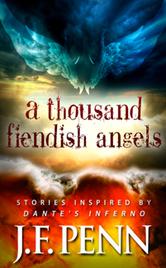 But if you want me to try to call out something that is currently exclusive to Kobo, one that I quite enjoyed is the special “Inferno” tie-in linked short stories that J.F. Penn wrote as part of a major “The Descent” contest that Kobo ran just prior to Dan Brown’s latest big release. Fans of Dan Brown or James Rollins are likely to enjoy the wonderful “Easter Egg” references and enriched links to Dante’s classic work within the pages of J.F. Penn’s A THOUSAND FIENDISH ANGELS – three wonderfully intriguing tales called Sins of the Flesh, Sins of Treachery and Sins of Violence.
But if you want me to try to call out something that is currently exclusive to Kobo, one that I quite enjoyed is the special “Inferno” tie-in linked short stories that J.F. Penn wrote as part of a major “The Descent” contest that Kobo ran just prior to Dan Brown’s latest big release. Fans of Dan Brown or James Rollins are likely to enjoy the wonderful “Easter Egg” references and enriched links to Dante’s classic work within the pages of J.F. Penn’s A THOUSAND FIENDISH ANGELS – three wonderfully intriguing tales called Sins of the Flesh, Sins of Treachery and Sins of Violence.
This is a great way to check out J.F. Penn’s writing so you can enjoy her riveting ARKANE series featuring Dr. Morgan Sierra who is much more than a female “Indiana Jones.”
Here’s <"a href="http://www.kobo.com/ereaders?___store=canada_english_cad&style=onestore">a link to the various readers and free APPs
(Kobo is available on all devices and computers, so you don’t need to own a Kobo to enjoy them.)Thanks, Mark. Kobo and Indie Bound are exciting places for writers today. We appreciate you sharing your expertise with us.
Darcy’a Note: One of the cool things about Kobo is its partnership with the American Booksellers Association and IndieBound. You can find all my Kobo eBooks at the Kobo website here . But I’d rather you shop at That Bookstore in Arkansas by following these links:
Intrigued and want to learn more? SelfpublishingPodcast.com did a 1 1/2 hour conversation with Mark that is available on YouTube (rated PG13!).
If you can’t see this video, click here.
Blog: Scribble Chicken! Art and Other Fun Stuff (Login to Add to MyJacketFlap)
JacketFlap tags: publisher, pet, pets, weird, star, silly, sea, stars, vintage, sky, water, sign, sailing, rowing, publish, strange, row, starry, Add a tag
Blog: Scribble Chicken! Art and Other Fun Stuff (Login to Add to MyJacketFlap)
JacketFlap tags: illustrator, children, publisher, children's books, Illustration, halloween, animal, cute, scary, book, pet, pets, pig, nature, animals, outdoors, weird, mouse, painting, piggy, child, children's book, silly, grow, vintage, wild, seasonal, outside, sign, costume, publish, strange, growth, spooky, guinea pig, outdoor, Oil Style, guinea, Add a tag
Blog: Scribble Chicken! Art and Other Fun Stuff (Login to Add to MyJacketFlap)
JacketFlap tags: illustrator, children, publisher, children's books, Illustration, adventure, cute, book, nature, outdoors, weird, Cowboy, painting, child, children's book, silly, cat, grow, vintage, desert, trail, horse, outside, Kitten, costume, publish, Pony, strange, growth, ride, feline, outdoor, riding, Oil Style, horse back riding, Add a tag
Blog: Scribble Chicken! Art and Other Fun Stuff (Login to Add to MyJacketFlap)
JacketFlap tags: children, publisher, band, animal, book, pet, pets, cello, weird, zoo, child, children's book, silly, vintage, playing, bear, sign, tuba, illustrator, children's books, Illustration, music, cute, nature, outdoors, painting, garden, grow, penguin, giraffe, musical, performing, orchestra, concert, outside, performance, costume, growth, publish, strange, suit, instruments, instrument, outdoor, trumpet, suits, oboe, Oil Style, trombone, perform, Add a tag
Blog: Scribble Chicken! Art and Other Fun Stuff (Login to Add to MyJacketFlap)
JacketFlap tags: illustrator, children, publisher, children's books, Illustration, animal, cute, dance, book, pet, pets, ballet, nature, outdoors, weird, painting, child, children's book, silly, grow, vintage, audience, stage, ferrets, ferret, outside, sign, performance, dancer, costume, publish, strange, growth, outdoor, Oil Style, perform, Add a tag
Blog: Scribble Chicken! Art and Other Fun Stuff (Login to Add to MyJacketFlap)
JacketFlap tags: illustrator, children, children's books, Illustration, animal, cute, book, pet, pets, nature, outdoors, painting, child, children's book, garden, grow, armadillo, outside, costume, weird, zoo, spring, silly, vintage, sign, strange, publish, growth, outdoor, Oil Style, Add a tag
Blog: Scribble Chicken! Art and Other Fun Stuff (Login to Add to MyJacketFlap)
JacketFlap tags: illustrator, children, publisher, children's books, Illustration, cute, book, nature, outdoors, weird, painting, spring, child, children's book, garden, silly, cat, grow, vintage, outside, Kitten, costume, publish, strange, growth, feline, outdoor, Oil Style, Add a tag
Blog: Darcy Pattison's Revision Notes (Login to Add to MyJacketFlap)
JacketFlap tags: publishing, ebooks, self, how to, publish, indie, arthur slade, niche, Alternate Publishing, Add a tag
Arthur Slade, Canada’s premier writer of young adult fantastical fiction, won the prestigious Governor General’s Award (Canada’s equivalent of the Newbery), the Mr. Christie’s Award, and has had books on the American Library Association Best Books for Young Adults and has been a finalist for the Edgar Award (Mystery Writers of America). Last year, he reisued his backlist as ebooks and reports on the results here: A glorious year of ebooking – Learn how he sold 6353 EBooks!.
Drawing upon that experience, Art gives tips today about taking the same route.
This is part of the continuing series on Alternate Publishing:
Alternate Publishing Series TOC
- Alternate Publishing: POD to Finish a Series
- Alternate Publishing: Niche Marketing of Nutrition for Kids
- Alternate Publishing: Historical Fiction
- Alternate Publishing: Ebooks
- Alternate Publishing: Book Apps
- Alternate Publishing: Games and Educational Resources
5 Tips for Ebooks
Guest post by Arthur Slade
If you’re looking at self publishing your own work on Kindle or Kobo, or B&N or…well on any of those retailers here are 5 handy tips.
- Don’t be afraid. The world of epublishing is confusing. There are mobis, and epubs, and html and pdfs and… If you’re not into figuring out how to turn your book into these various formats then look for a formatting service. They’ll do it for you and you don’t have to sweat.
- Diversify. Amazon is the largest seller of ebooks, but it’s usually best to take the time to distribute your work to as many different retailers as possible. This allows you to reach a bigger audience. There’s nothing more frustrating for a reader with a Nook to find out that you’re only available on Amazon. And you never know, you may become a hit on one of the other retailers.
- Make sure your work is perfect. Yep, that should be a given. I’m assuming you’ve already rewritten it thirty times or so. Even the tiniest typos may upset a reader and give you a dreaded 1 star rating. So be sure your work is without typos and the gobbledygook that can spring up when text is converted to epublishing files. To do this it’s good to read your own work on a Kindle or your favourite device (an iPad is handy because you can use all of the various readers on one device).
- Put a professional cover on your book. You are entering the professional world and Add a Comment
Blog: Darcy Pattison's Revision Notes (Login to Add to MyJacketFlap)
JacketFlap tags: create space, Alternate Publishing, alternate, author, series, publish, Joni Sensel, self-publish, case study, Add a tag
Alternate publishing has been a quiet, behind-the-scenes subject for the last two or three years, but I keep hearing people talking about how they’ve taken the plunge. The terms vary: self-publishing, indie publishing, niche publishing. Some authors are apologetic; some are arrogant; some are business-like. But more and more, people are taking their copyright into their own hands and asking: how can I make money with what I have written. This week, we’ll look at seven stories of people who have done exactly that. For every story told here, I probably know of two or three more similar stories.
Dusting off an old publisher’s hat
Guest post by Joni Sensel
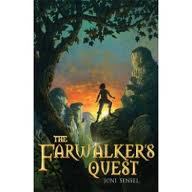 |
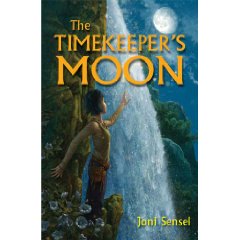
|
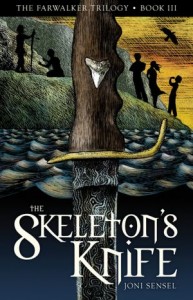
|
My latest book starts with a mouse-gnawed, bedraggled hat, and I found myself donning an old hat myself to get this book to readers who were asking for it.
More than ten years ago, I started a small press and self-published two picture books. One earned an award, both sold out their print runs, and I got a terrific crash-course in publishing — enough to know I’d rather write. I stuffed my publishing hat into a closet.
After four traditionally published middle-grade novels, however, I dusted off my DIY cap. Having published THE FARWALKER’S QUEST and its sequel (which were contracted individually), Bloomsbury didn’t even want to consider the trilogy’s finale. Though the books earned good reviews and even a little award notice, sufficient copies didn’t sell for the company to invest in the third.
Farwalker’s Quest was a 2009 Cybil Award finalist and a 2010 Bank Street College ‘Best Book’.
REVIEWS
- This is a solid and well-paced fantasy in which the journey is more important than the conclusion. The theme of finding and accepting one’s true calling resonates. –School Library Journal
- [T]he book is at once elegant and lyrical, while also offering an intensely paced and action-driven plot for readers who are seeking adventure along with poetic contemplation.
–The Bulletin of the Center for Children’s Books- This stand-alone fantasy has a unique setting with an intriguing history and a suspenseful plot. –Booklist
- The story offers crisp dialogue, an exciting plot, and strong secondary characters. –Kirkus
Yet readers were asking for more. So I finished it myself.
I did
Add a CommentBlog: de Helen's bits (Login to Add to MyJacketFlap)
JacketFlap tags: success, poems, publish, Stillwater Review, Mom Egg, Add a tag
How do you measure success? We all have our ways. For me success usually means either productivity or outside acknowledgement. This year, I'm achieving both. I've joined listserves to help keep me prolific: one in which I commit to writing 100 words a day for 100 days; one in which I commit to writing a new poem every day; one in which I commit to writing (and posting) 15 pages of work every week; and for my health a Daily Challenge that is related to health. I've belonged to the 15 pages/week for years, disappearing for months at a time, but have been active again now for several months again. So far in 2011, I have written over 60 new poems, which I will edit and polish next year, unless I decide to stop writing new work and start editing at some point this year.
Meanwhile, I continue to send out my edited work, and have had three poems accepted so far this year. One to Mom Egg, one to Stillwater Review, and one to be published in the book "paying attention: a river of stones."
On the days I have a migraine, I write migraine poems (3 so far this year). I've written with a temp of 102 when I had the flu. I wrote through the flu, an ear infection, beautiful days of sunshine when I could have been gardening, the weekends, and sheer laziness when I didn't "feel like it." Commitment is a powerful motivator. For me.
Blog: Sparky Firepants Art Blog (Login to Add to MyJacketFlap)
JacketFlap tags: scbwi, tips, publishing, people, opinions, publish, self-publish, Add a tag
Wow. I was all prepared to to write a post on the love/hate relationship of trying to get your book published, but Judy Dunn of Cats Eye Marketing tweeted this post by Harry Baum and it pretty much sums up everything I’ve been thinking about lately.
A Publishing Person Self-Publishes
I mean seriously, wow. If you’re like me and you wonder about the question of self-publishing or struggle over whether or not to submit your work to publishers, you need to read this article.
I’m going to get all woo-woo on you and say that another article opened my mind and allowed me to focus my energy on more positive, profitable pursuits than traditional publishing. It’s by my friend Mark Silver of Heart of Business:
What you need to do before you publish a book
If that weren’t enough, Jon of CBI Clubhouse pointed out a in a comment here that the first step is perfecting your craft. Worry about publishing later (paraphrased). He’s absolutely right and there’s tons of similar advice and information on his web site.
I’m surrounded by so much excellent information. If you ever wonder how I came to know a thing or two about anything, it’s because I’ve had help.
Blog: places for writers (Login to Add to MyJacketFlap)
JacketFlap tags: contest, Contests, Young Writers, Deadlines: March 08, youngadults, Add a tag
The Canadian Aboriginal Writing Challenge is a short story contest for young Aboriginal Canadians. First prize in each category: $2000, trip to Calgary, and more. Participants must be of Aboriginal ancestry (Status, Non-Status, Inuit and Metis) and between the ages of 14-18 or 19-29. Submit stories 800-1400 words based on a moment or period in Aboriginal history. The event should be tied to Canadian history and/or the participant’s ancestral history. Deadline: March 31, 2008. More details...
Add a CommentBlog: places for writers (Login to Add to MyJacketFlap)
JacketFlap tags: Calls, Deadlines: Ongoing, call, youngadults, Add a tag
Scholastic Education (ON) is accepting short stories for Grade 6 readers. Stories should be at a reasonable high reading level and include literary devices such as flashbacks, time change, figurative languages, foreshadowing, different perspectives, symbolism, subplots, dear reader (acknowledging the reader device). Also alliteration, allusion, hyperbole, irony, metaphor, onomatopoeia, oxymoron, personification, rhetorical question, simile, understatement. Length: 3000 words max. No pets, witchcraft, or demons. Send questions to Laura Smith at [email protected]. Send submissions to: Laura Smith, Scholastic Canada, 175 Hillmount Road, 3rd Floor, Markham, ON, L6C 1Z7. (via Saskatchewan Writers' Guild)
Add a CommentBlog: places for writers (Login to Add to MyJacketFlap)
JacketFlap tags: tv, Calls, call, youngadults, Add a tag
Radical Sheep Productions (ON) is soliciting ideas for new youth-targeted television series. Categories: preschool, ages 6-9, 9-12, 12-17. Single-page queries only. Compensation commensurate with experience. More details...
Add a CommentBlog: places for writers (Login to Add to MyJacketFlap)
JacketFlap tags: poetry, Contests, Young Writers, Deadlines: May 08, youngadults, contest, Add a tag
Pandora's Collective (BC) invites entries for their annual poetry contest. Submit poems 40 lines max. Prizes: First (adults) $100; first (teens) - $70; first (children) - $40. Entry fees: Adults - $5/poem; Teens (14 to 19) - $4/poem; Children (13 and under) - $3/poem. Deadline May 15, 2008. More details...
Add a Comment






